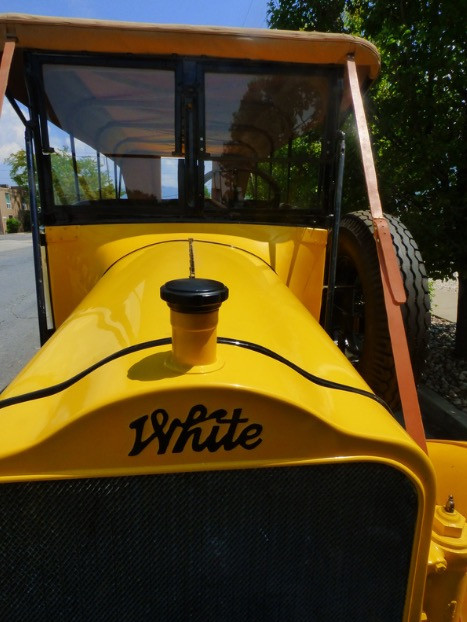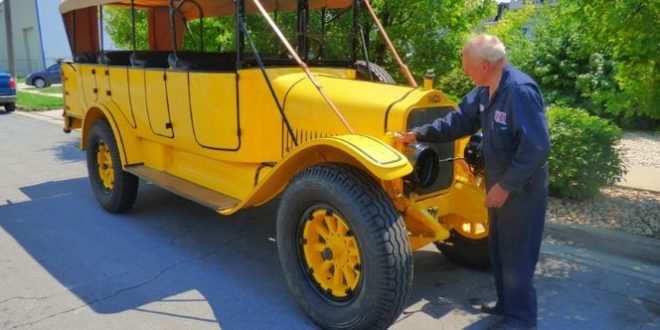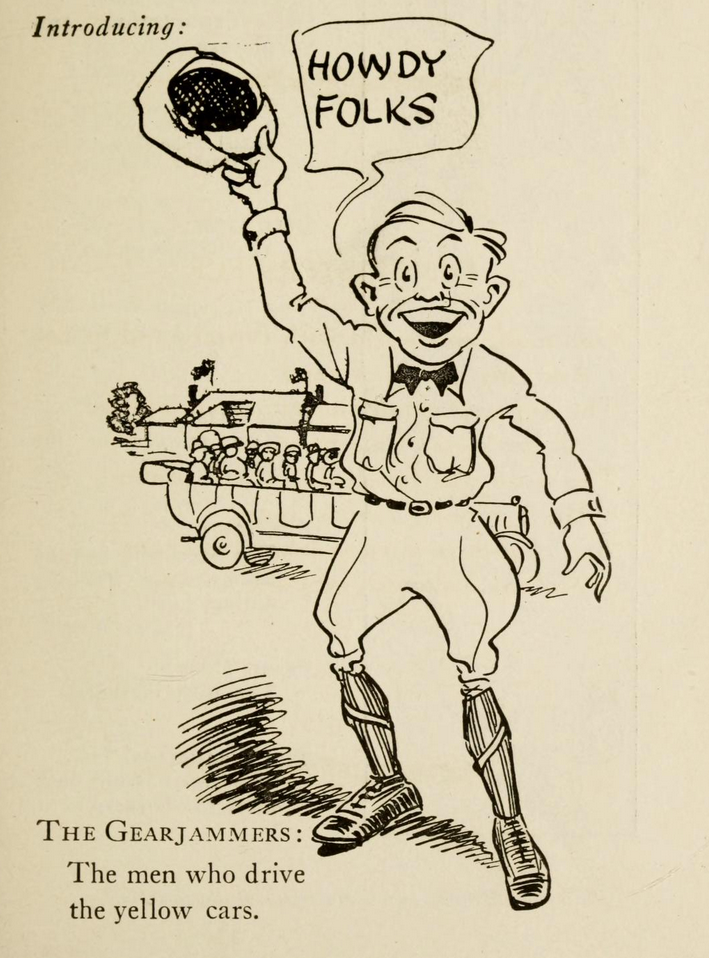Once upon a time, Yellow Buses were the way to see Yellowstone National Park in style.
The buses came into being shortly after 1916, when motor cars had supplanted stagecoaches and horses as the main vehicle traffic in Yellowstone. Rather quickly they became an iconic part of the Park’s visitor landscape, especially among staff, who were known in some quarters as “gearjammers.”
The White Motor Company designed and built an 11-passenger TEB bus for Yellowstone (and other national parks) in 1917, following it up with the now iconic 1920 model, featuring a bright yellow 15/45 chassis. These buses were all the rage from 1920 to March 30, 1925, when Yellowstone’s bus barn burnt down, taking over 90 irreplaceable vehicles with it.
The White Motor Company manufactured additional vehicles to replace those lost in the fire, but collectors and aficionados still rue the day most of Yellowstone’s bus fleet was burnt up, especially from that early period. As time went on, and as personal motor travel superseded interest in the bus route, Yellow Buses ended up on nearby farms, where they were more often than not repurposed. Or sold for scrap.
Although the Yellow Bus sort of disappeared from the Yellowstone scene (as did the White Motor Company, which went out of business in 1980), it hasn’t been completely erased. These days, you can still take a Yellow Bus tour, in one of the Park’s eight refurbished buses, but today’s Yellow Bus is nowhere near as prevalent as its 1920s heyday. And according to KSL Utah, one Salt Lake City man is trying to raise the vehicle’s profile by lovingly restoring the vehicles to their former glory.
Merrill Maxfield has immersed himself in Yellow Bus culture since the mid-1960s, when he purchased his first Yellow Bus from a car auction in Denver. Approximately fifty years later, he’s still working to get as many Yellow Buses as he can up and running. You can see video of him driving a Yellow Bus below.
Indeed, Maxfield (who is in his 80s and still putting his all into vehicle restoration) is treating this as a personal mission—saving these vehicles from the scrap heap, and obsolescence. From KSL:
“There are so few left that I think it’s a shame to take them to the scrap pile, which is what might happen even to the ones I’ve got,” he said. “I’m getting old and my kids don’t have much interest in it, so I’m hoping that I can get enough done or some of these sold.”
It’s a labor of love for Merrill Maxfield, who works on the vehicles himself at over 80 years old, according to his nephew Merrick Maxfield. Merrill Maxfield estimated that it takes at least 2,000 hours to restore one bus. It’s an involved process that includes fabricating parts that are no longer available, like hood latches and fenders.
“People don’t realize the work it takes and the expense it takes,” he said. “For instance, to get tires for them it is over $2,000.”
[…]
He picked the hobby back up in 2007 when a friend who owns a Yellowstone park chassis told him there was a bus somewhere in a small town in Northern Idaho. It took some sleuthing, but Merrill Maxfield found the bus and bonded with its owner over poetry. The man let him buy the bus, as long as he promised to restore the vehicle and keep it.
“I promised him that I would,” Merrill Maxfield said. “I still have that particular bus. That’s the one I use. I call it my kickaround bus because if you use a bus after you restore it, it starts to get chipped and worn.”
From there, Merrill Maxfield was connected to a man in Montana who went through the states surrounding Yellowstone National Park and gathered chassis that had been sold to farmers. The man’s ideas for the vehicles didn’t pan out, so Merrill Maxfield wanted to save the collection and bought the vehicles.
Most of the vehicle bodies were gone, but Merrill Maxfield is currently working to restore the buses using the pattern from the vehicle he purchased in 2007. The collection includes 19 pieces of frame with serial numbers that were used in the park by concessionaires, out of which he can “easily” complete five vehicles and possibly even more.

Merrill (along with his nephew Merrick) said they hope the vehicles will someday find homes in private collections and museums, although the running price for a fully-restored Yellow Bus is hefty. Indeed, we previously reported on an eBay auction held by Merrill just over a year ago. The starting bid? $70,000.
While the price may be a bit steep for the average collector, and Merrill has said he’s willing to discount the buses a bit, he says the money he gets from Yellow Bus sales goes right back into restoring more buses. According to Merrill’s nephew, donating the buses could also be helpful from a tax perspective—anything, so long as Merrill can keep restoring buses. From KSL:
“I am grateful that my uncle has saved these from being scrapped (literally) as they are so extremely rare,” Merrick Maxfield wrote in an email. “He has shouldered the work for decades and now is the opportunity for others to enjoy caring for, restoring, showing, parading, touring, collecting … these pieces of history (as well as works of art) to bring countless joy to generations to come.”
[…]
Despite being busy with restoration work, Merrill Maxfield still manages to find time to enjoy his historic vehicles. He owns several other old cars in addition to the Yellowstone buses and has driven many of them across the country with motoring groups.
“We like to drive our cars,” he said. “We don’t just sit in the park and look at them.”
Every year around Labor Day, he gathers with friends in Yellowstone National Park and brings his “kickaround” bus.
“We drive our buses through the park with friends and neighbors and other interested parties just to enjoy the experience the way they did back in the ’20s,” he said. “We can go fast enough we don’t hold traffic up so the Park Service doesn’t bother us.”
 Yellowstone Insider Your Complete Guide to America's First National Park
Yellowstone Insider Your Complete Guide to America's First National Park







You must be logged in to post a comment.